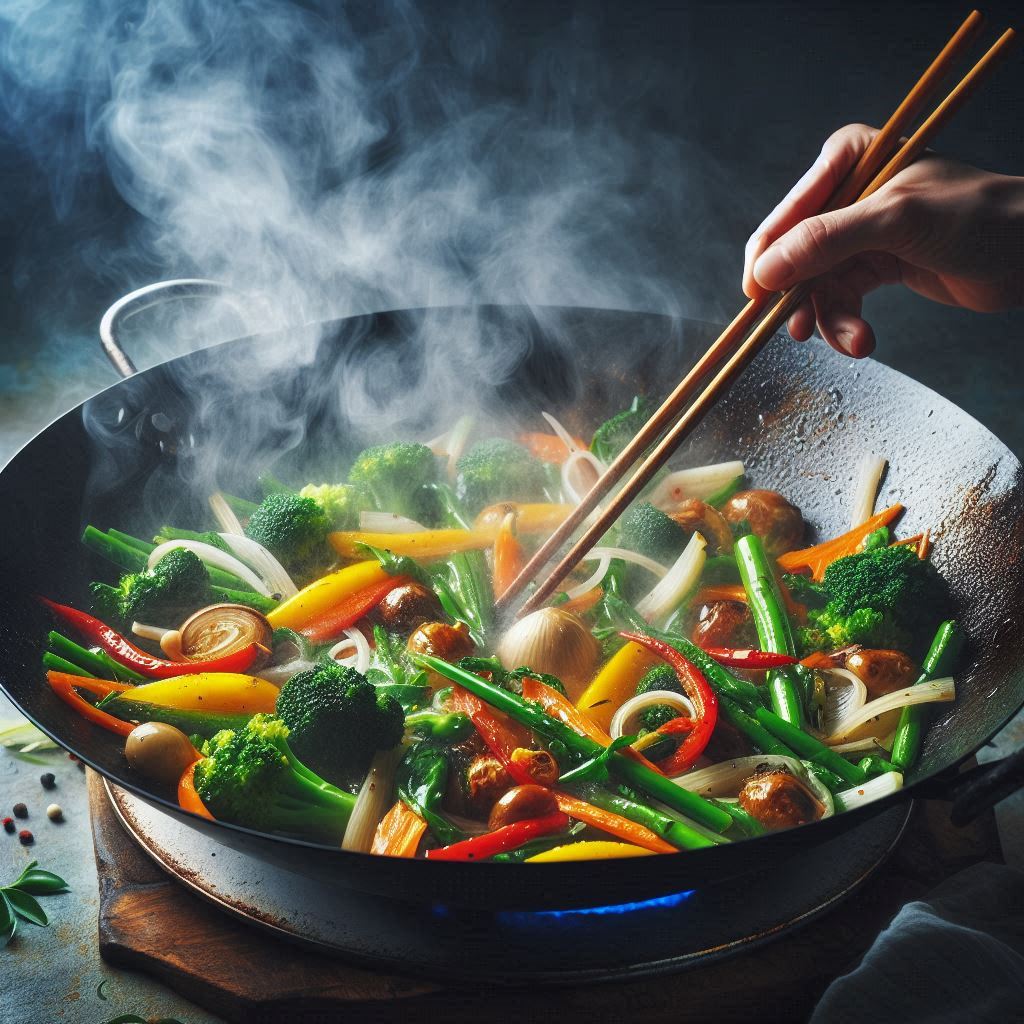
Woks have been a cornerstone of Asian cuisine for over 2,000 years, evolving from humble beginnings in Chinese kitchens to becoming a global culinary essential. Their unique design—deep, sloping sides and a rounded or flat bottom—makes them incredibly versatile, perfect for stir-frying, steaming, deep-frying, and even smoking.
But with so many types of woks available, how do you choose the right one? In this guide, we’ll break down the different types of woks, their pros and cons, and how they compare to other cookware. Whether you’re a seasoned chef or a home cook looking to expand your skills, this guide will help you find the perfect wok for your kitchen.
Types of Woks: Which One is Right for You?
Not all woks are created equal. The material, shape, and design significantly impact performance. Here’s a breakdown of the most common types:
1. Carbon Steel Woks (The Gold Standard)
Carbon steel woks are the go-to choice for professional chefs and home cooks alike. They heat up quickly, distribute heat evenly, and develop a natural non-stick patina over time with proper seasoning.
Why Choose Carbon Steel?
- Superior heat conductivity – Heats up quickly and evenly, essential for high-heat stir-frying.
- Lightweight & easy to handle – Makes tossing ingredients effortless.
- Develops a natural non-stick patina – With proper seasoning, it becomes more non-stick over time.
- Affordable & long-lasting – A well-maintained carbon steel wok can last decades.
Potential Drawbacks
- Requires seasoning – Needs regular oiling to prevent rust.
- Not induction-compatible (unless flat-bottomed) – Round-bottomed versions need a wok ring for gas stoves.
Want restaurant-quality stir-fries at home? This 14-inch commercial carbon steel wok from Craft Wok is hand-hammered by Guangzhou artisans with 1.8mm thick steel for perfect heat control. The traditional round bottom (gas stoves only) and ergonomic handles help you achieve that prized wok hei flavor. While it requires seasoning (instructions included), this pro-grade workhorse develops a natural non-stick finish over time. Try it out!
2. Cast Iron Woks (The Heat Retainer)
Cast iron woks are heavier and take longer to heat up, but once hot, they retain heat exceptionally well—perfect for deep-frying and slow cooking.
Why Choose Cast Iron?
- Unmatched heat retention – Stays hot for consistent frying and braising.
- Naturally non-stick when seasoned – Develops a slick surface over time.
- Extremely durable – Can last generations with proper care.
Potential Drawbacks
- Very heavy – Harder to maneuver, especially when full.
- Slow to heat up & cool down – Not ideal for quick stir-frying.
- Prone to rust – Requires diligent seasoning and drying.
Get restaurant-quality results with this versatile 5.8-quart cast iron wok. Pre-seasoned and ready to use, its durable construction delivers perfect heat retention for stir-frying, searing, and braising. The non-stick coating ensures easy food release without extra oil, while the included wooden lid locks in flavor. Works on all stovetops—including induction—making it ideal for family meals and healthier cooking. Try it here!
3. Non-Stick Woks (The Beginner-Friendly Option)
Non-stick woks feature a Teflon or ceramic coating, making them easy to clean and great for low-oil cooking.
Why Choose Non-Stick?
- Effortless food release – Great for delicate foods like eggs and fish.
- Easy to clean – Often dishwasher-safe.
- Requires less oil – Healthier for low-fat cooking.
Potential Drawbacks
- Not for high-heat cooking – Coatings degrade above 500°F (260°C).
- Shorter lifespan – Scratches and wear reduce non-stick effectiveness.
Want perfect stir-fries every time? The Tefal Comfort Max 28cm Wok Pan makes it easy with its smart Thermo-Spot temperature guide and ultra-durable non-stick surface. Works on all hobs (even induction), oven-safe to 175°C, and features a stay-cool handle for comfortable tossing. Restaurant results, home convenience—why wait? Give it a try!
4. Stainless Steel Woks (The Rust-Resistant Choice)
Stainless steel woks are durable and resistant to rust, often featuring an aluminum or copper core for better heat distribution.
Why Choose Stainless Steel?
- No rust or corrosion – Ideal for humid climates.
- Works with induction stoves (if magnetic stainless steel).
- Dishwasher-safe – Easy cleanup.
Potential Drawbacks
- Food sticks more easily – Requires proper preheating and oiling.
- Less responsive to temperature changes – Slower to adjust than carbon steel.
Master high-heat cooking with the Tefal Virtuoso 28cm Wok Pan. Its premium unsealed stainless steel delivers perfect searing for meats and veggies, while the induction-ready base works on all stovetops. Oven-safe to 250°C with a sturdy riveted handle, it’s built to last through countless stir-fries and sauces. Check it out here!
5. Electric Woks (The Portable Solution)
Electric woks come with a built-in heating element, making them ideal for kitchens without gas stoves or for outdoor cooking.
Why Choose an Electric Wok?
- No stove needed – Great for RVs, dorms, or tabletop cooking.
- Adjustable temperature control – Precise heat settings.
Potential Drawbacks
- Lower maximum heat – Struggles with authentic high-heat stir-frying.
- Bulky & less versatile – Not ideal for traditional wok techniques.
Crave easy, authentic Asian cooking? The Aroma Housewares AEW-306 Electric Wok is your all-in-one solution. This 5-quart powerhouse heats fast and maintains perfect temps with its included temperature probe. The durable cast aluminum construction features non-stick coating for effortless cooking and cleanup, while the cool-touch handles keep you safe. Complete with a tempered glass lid, steam rack, and even chopsticks, it’s ready for stir-fries, tempura, soups, and more—no stovetop needed! Try it here.
On top of finding your perfect wok, complete your Asian cooking toolkit with the right chopsticks! Just like choosing the right wok material affects your cooking, selecting the proper chopsticks can elevate your dining experience. Discover how to pick the best chopsticks for your needs.
Flat-Bottomed vs. Round-Bottomed Woks
- Flat-bottomed woks are designed for modern stovetops (electric, induction, or gas) and offer better stability.
- Round-bottomed woks are traditional and best for gas stoves with a wok ring, providing superior heat distribution.
Wok vs. Other Pans: Why a Wok Wins for Asian Cooking
While skillets, sauté pans, and Dutch ovens have their uses, woks offer unmatched versatility:
- High sides prevent spills when stir-frying.
- Sloped design makes tossing ingredients effortless.
- Efficient heat use requires less oil for deep-frying.
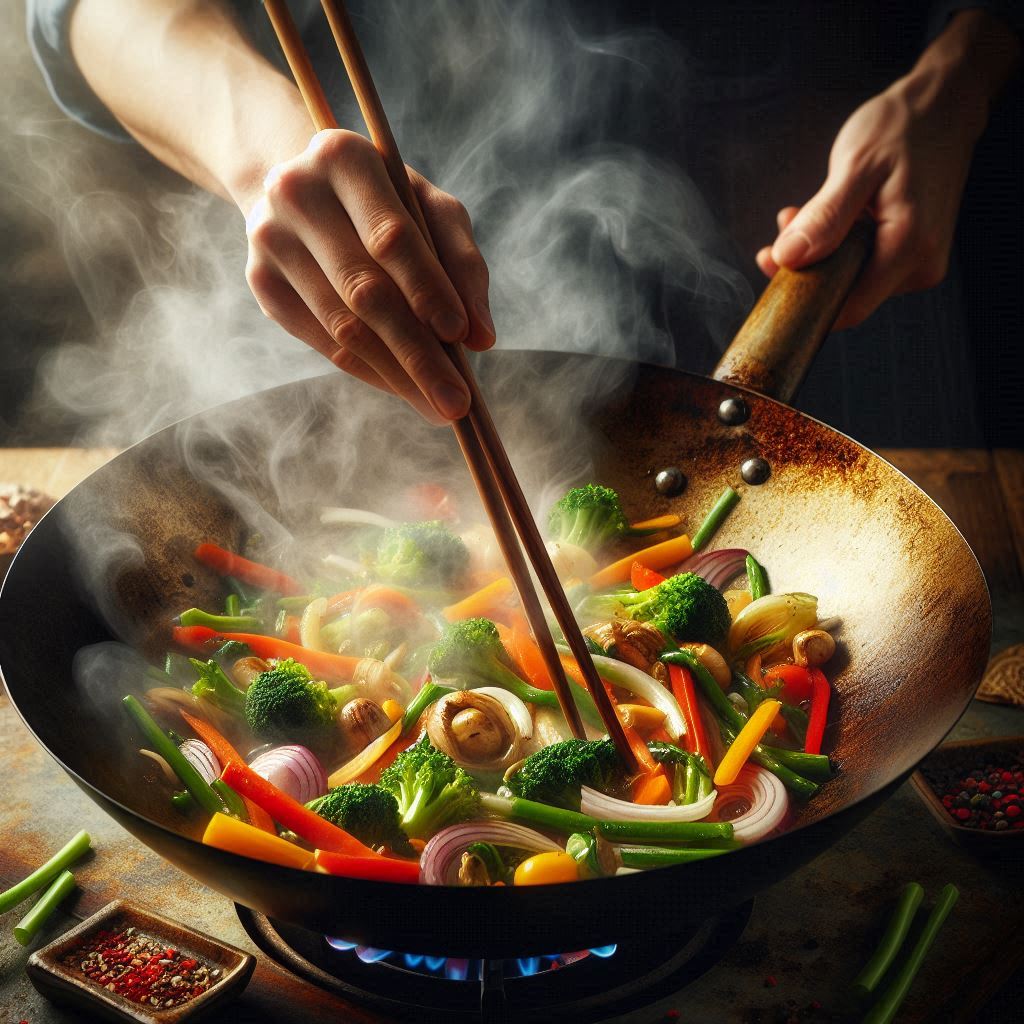
Cooking Techniques with Woks
The wok’s unique shape and design make it suitable for a variety of cooking techniques, including:
- Stir-Frying: The high, sloping sides of the wok allow for easy tossing and quick cooking at high heat.
- Deep-Frying: The wok’s depth makes it ideal for frying foods with minimal oil splatter.
- Steaming: A bamboo or metal steamer can be placed inside the wok for steaming vegetables, dumplings, or fish.
- Smoking: The wok can be used as a smoker by placing wood chips at the bottom and covering it with a lid.
- Boiling and Braising: The wok’s depth also makes it suitable for boiling noodles or braising meats.
How to Choose the Best Wok for Your Kitchen
Picking the right wok depends on your cooking style, stovetop, and maintenance preferences. Here’s what to consider:
1. Material Matters
- For high-heat stir-frying: Carbon steel
- For deep-frying and slow cooking: Cast iron
- For easy cleaning and low-oil cooking: Non-stick or stainless steel
2. Weight & Handling
- Lighter woks (carbon steel, aluminum) are easier to toss food in.
- Heavier woks (cast iron) retain heat better but require more arm strength.
3. Stovetop Compatibility
- Gas stoves: Best for round-bottomed woks (with a wok ring).
- Electric/induction stoves: Flat-bottomed woks work best.
4. Maintenance & Seasoning
- Carbon steel and cast iron require seasoning but improve over time.
- Non-stick and stainless steel are low-maintenance but may lack flavor depth.
Final Verdict: Which Wok Should You Buy?
- Best Overall: Carbon steel wok (lightweight, heats fast, traditional feel).
- Best for Beginners: Non-stick wok (easy to use and clean).
- Best for High Heat: Cast iron wok (retains heat for deep-frying).
- Best for Induction Stoves: Flat-bottomed stainless steel wok.
Whether you’re a stir-fry enthusiast or just dipping your spatula into wok cooking, choosing the right one can elevate your meals from good to wok hei perfection. Carbon steel remains the gold standard for versatility and authenticity, while cast iron, non-stick, and stainless steel each shine for specific needs. Consider your stovetop, cooking style, and maintenance preferences—then let the sizzle begin! Ready to find your perfect match? Explore our top picks above and start your culinary adventure today. Happy wok-ing!
Have a favourite wok? Share your thoughts below!
*Here’s a little transparency: Our website contains affiliate links. This means if you click and make a purchase, we may receive a small commission. Don’t worry, there’s no extra cost to you. It’s a simple way you can support our mission to bring you quality content.*
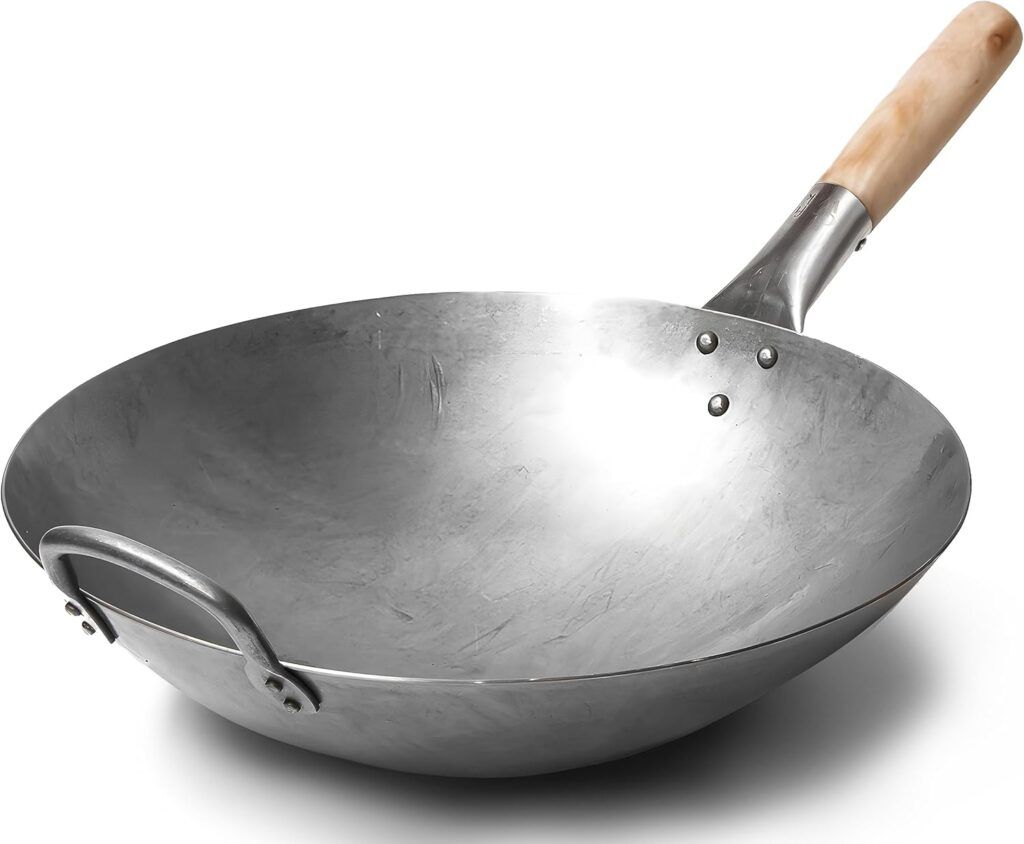
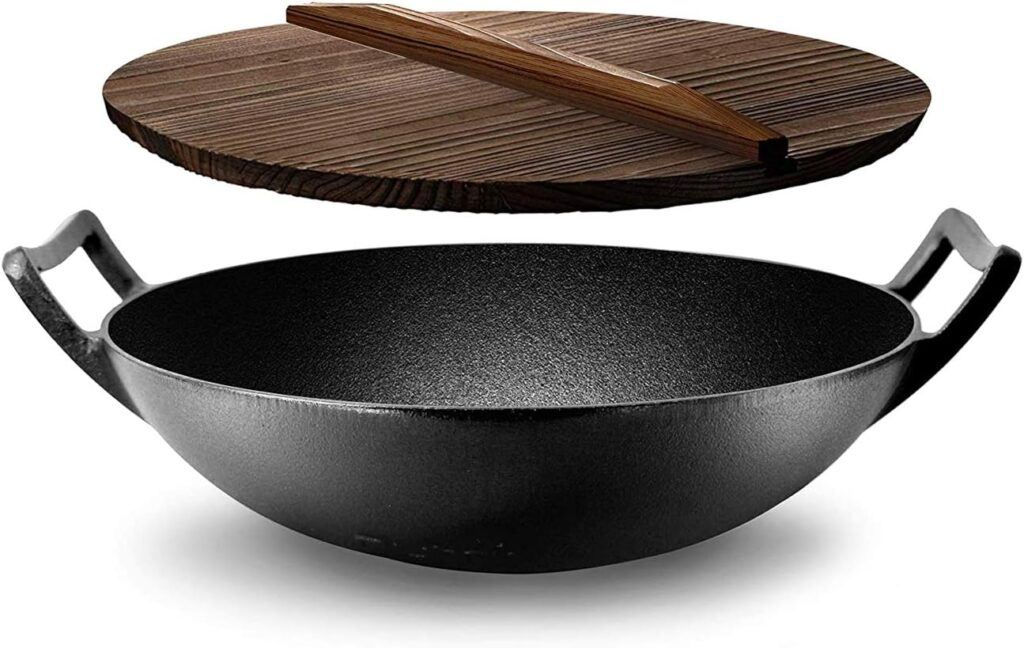
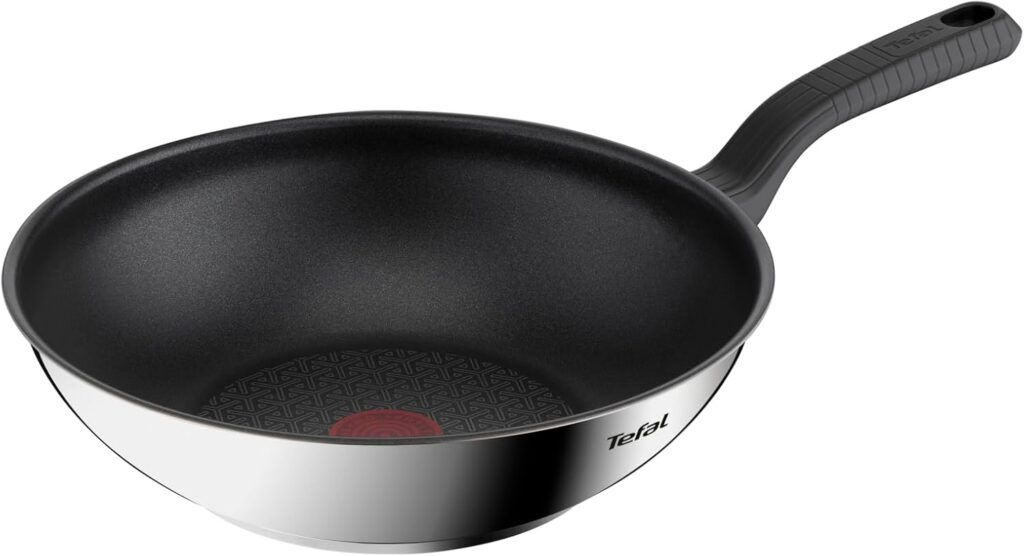
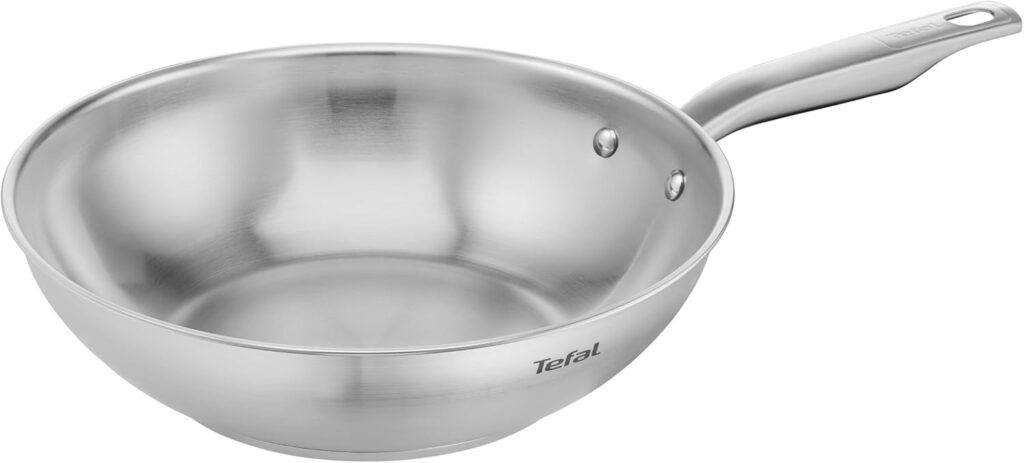
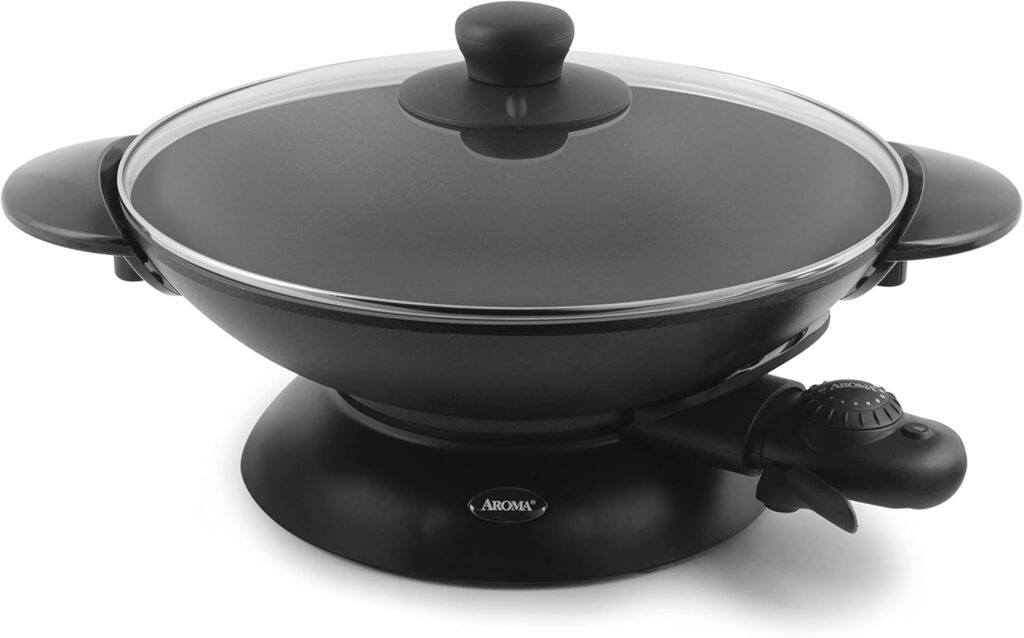
Very interesting article! Do woks work specifically for a certain type of cuisine like Asian cuisine, or can they work for the majority of foods?
Great question! I would say woks are definitely ideal for high-heat Asian dishes like stir-fries, however their versatile design works for everything – searing meats to frying and even pasta. I use mine daily, the sloped sides and quick heat distribution make it perfect for almost any cuisine. That said, nothing beats it for achieving that signature ‘wok hei’ smokey flavour in Asian cooking, so would definitely recommend!
Hi Cian, what is the best way to season a wok?
Good question! If it’s a new wok, I would first scrub it with hot soapy water to remove factory coating. Then heat it on high until the metal turns blue. Thinly coat the wok surface with peanut oil using a paper towel and bake upside-down at 200°C (400°F) for an hour, then let it cool. Repeat 2-3 times until a dark patina or film forms. Although this may take some time, it’s so worth it. After each use, clean the wok with hot water (without soap), dry it on heat, and then rub with a light coat of oil. This builds natural non-stick over time so that your hard work doesn’t go to waste. Good luck!
Hi Cian. An interesting post – I hadn’t appreciated that there were so many different pan options out there. I remember reading comments someone way back that non-stick isn’t exactly as good as what people use to say it was. My one sticks A LOT. I assume you cook – what’s your preferred option. Thanks – Stanley
Hi Stanley! Great point—non-stick isn’t ideal for high heat. For sticking issues, try controlling heat or seasoning your wok. My personal favorite is a carbon steel wok. It lasts forever and becomes non-stick over time. Happy cooking!
Hey Cian.
I agree with the guy above. Exactly the same for my non-stick pan and the handle is just not practical although mines pretty old now.
Have you used the carbon steel ones? I’ve seem some quite expensive ones so just not sure i want to spend too much!
Hi there! Yeah, non-stick definitely has its limits over time. I’ve used carbon steel woks—they’re a game-changer! You don’t need to go super expensive, even mid-range ones season beautifully and can last forever. Worth every penny!
That was a fun and surprisingly deep read, Cian. I grew up watching my mother cook with a wok she guarded like treasure. It was carbon steel, blackened from years of love and smoke. She never called it “seasoned,” but that patina told stories. We didn’t have fancy kitchen gear, yet every meal came out tasting like home. Reading this brought that memory right back.
I’ve used all sorts since then—non-stick, stainless, even one electric wok when I lived in a small flat without gas. None came close to that old one. Maybe that’s what wok hei really is—the spirit of cooking built over time, not just heat and oil. Funny how food tools can hold so much emotion.
You’ve made me want to go back to basics and find a good carbon steel one again. I love that you broke it down so clearly, but here’s my question: do you think the secret to a good wok dish is in the material, or in the cook’s patience to season it properly and care for it over time?
John
Hi John! Thank you for this loving memory. You have a real gift for finding the soul in everyday things. I love how you said “the spirit of cooking built over time”, that’s the most perfect definition of wok hei I’ve ever heard!
To answer your question: I think the material is the starting point, but the patience is the journey! Even though that sounds so cliché, a carbon steel wok really does ask for your care and in return rewards you with a lifetime of meals. The secret is understanding that the tools you’re using and you as the cook eventually become partners of some sort, and the best dishes come from that relationship!
So glad this inspired you to return to the classics. I think your mother would be so proud!